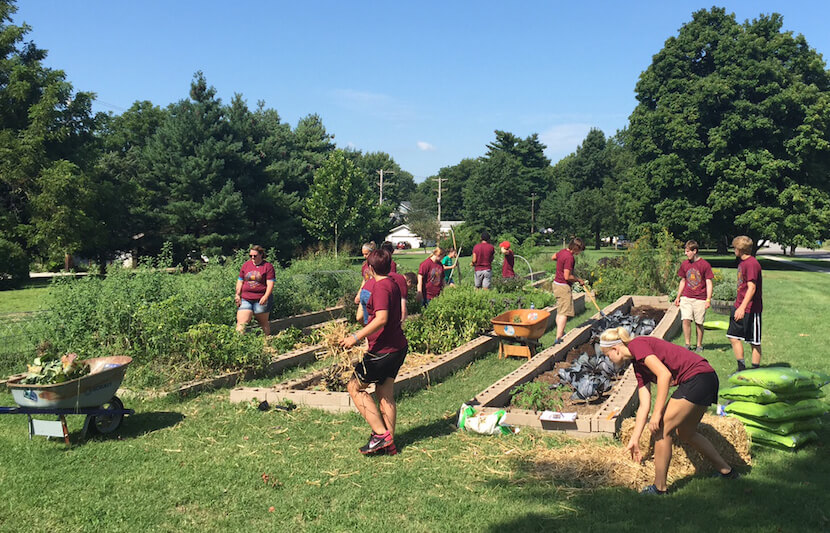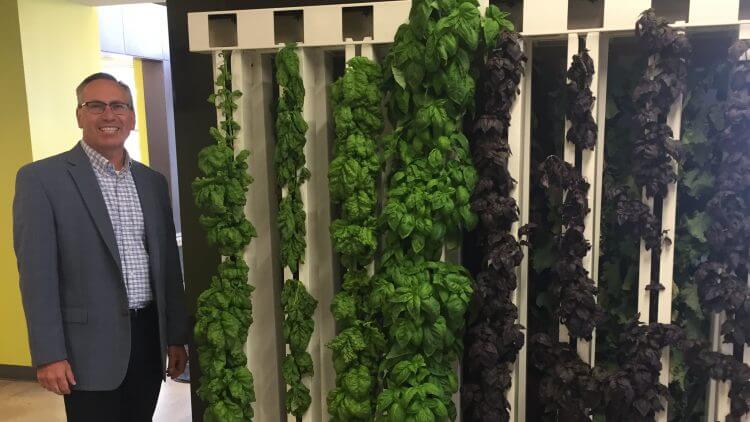In 2016, Missouri State University (MSU) introduced a handful of convenient and environmentally-friendly vertical food growing systems called ZipGrow Towers to its dining services. Since then, the university has expanded the program and created a “grow room” to house the 48 systems currently in place.
This revolutionary growing and harvesting practice enables MSU’s dining services to grow fresh and local produce right on campus instead of shipping in thousands of dollars of produce each year. This practice creates less of a carbon footprint than traditional agriculture methods and eliminates the carbon emissions from frequent delivery truck visits.
The ZipGrow Towers use a combination of aeroponics and hydroponics. Nutrients, water, and oxygen are carried from the bottom of the tower to the top and dispersed to all of the produce planted in the tower. Because the systems are vertical, they take up less space than traditional agricultural methods, but can yield just as much produce. This allows MSU to cultivate more produce without purchasing extra arable land.
MSU is one of the most prominent agriculture schools in the country. So naturally, the university prides itself in its ability to implement innovative agricultural solutions and teach its students the importance of environmental sustainability.
“This program encompasses what it means to be sustainable, while also fulfilling our duty as a higher education institution to educate our students on how to be sustainable citizens and consider the global ramifications of their actions and the actions of others,” said MSU’s Sustainability Coordinator Jordan Schanda.
MSU has also found a way to apply this program to academics. Through the expansion of the program, MSU and Chartwells Higher Education Dining Services have teamed up to develop an internship program that allows students to gain real-world experience and knowledge using this innovative technology, Schanda explained.
Sustainable agriculture is a booming field and this educational experience allows the University to provide our students with the skills they need to be successful after they graduate.
The ZipGrow Towers are just one example of MSU’s many efforts towards environmental sustainability over the past decade. The university has also developed the RecycleMania Art Display Contest, initiated Green Teams, installed hydration stations throughout campus, created a sustainability minor, shifted to green building construction, and much more. Clearly, “going green” at MSU means much more than merely recycling or limiting water usage.
The university’s commitment to sustainability began in 2007 when MSU created a presidential committee named the Sustainability Advisory Committee. This group, along with its four subcommittees and numerous student clubs and organizations, has helped MSU become a strong leader in the field of environmental sustainability and set the tone for everyone involved in the cause.
“The strides we’ve made in the last decade would not have been possible without the passionate involvement, support, and commitment of our dedicated staff, faculty, students and community organizations,” said Schanda.
The university intends to continue its efforts on improving the environment. Sustainability activists at MSU have already began drafting a sustainability strategic plan to cover the next 10 years, and have uncovered numerous potential projects. Most importantly, they wish to continue to broaden campus and community involvement and encourage students to promote change.
“By engaging students in this process, we are promoting transparency and offering students the opportunity to affect change at the institution level,” said Schanda. “This enables us to fulfill our ultimate goal of educating our students on how to be sustainable citizens by giving them the skills and experience they need to create a positive impact in their communities after they graduate.”




